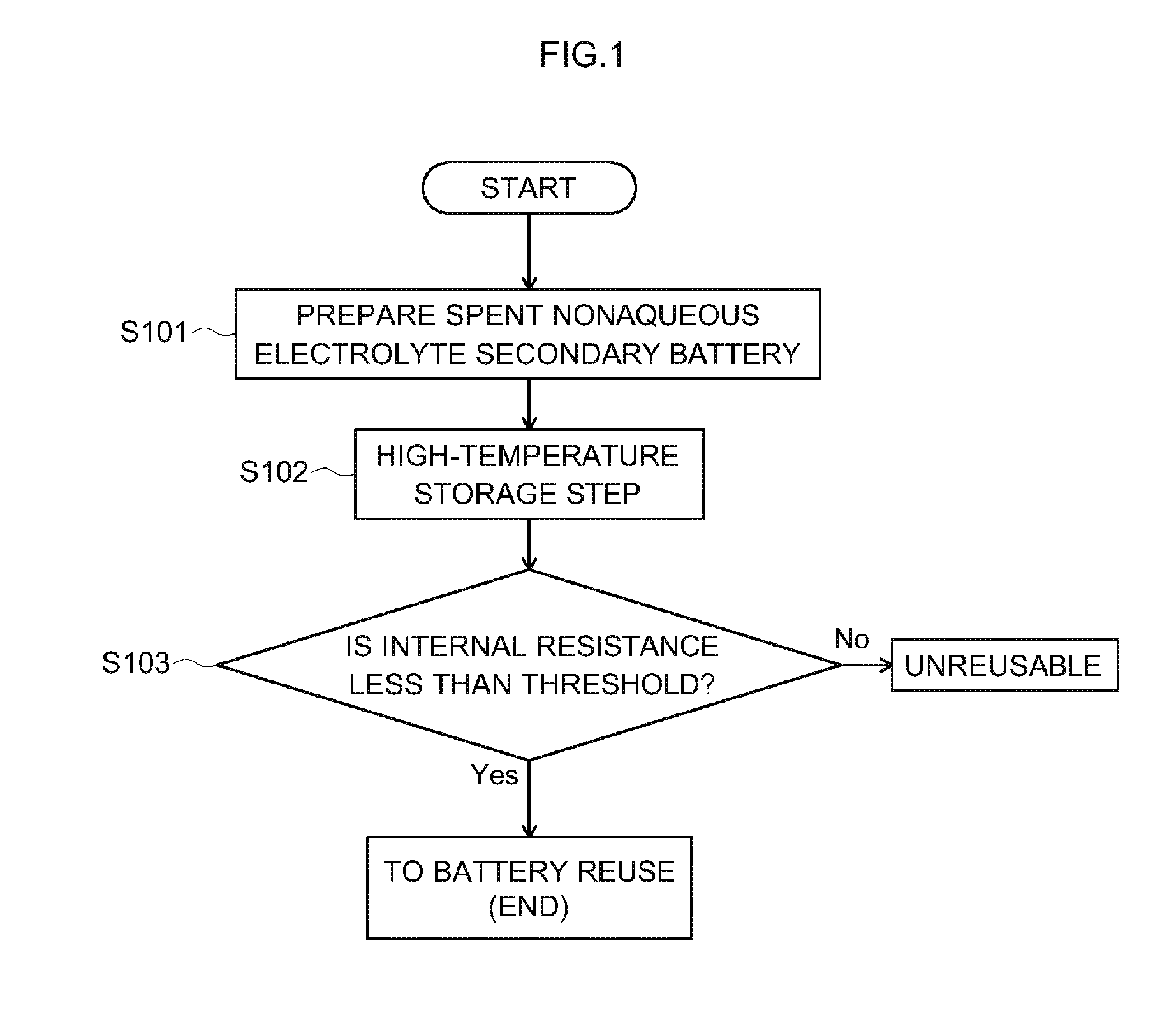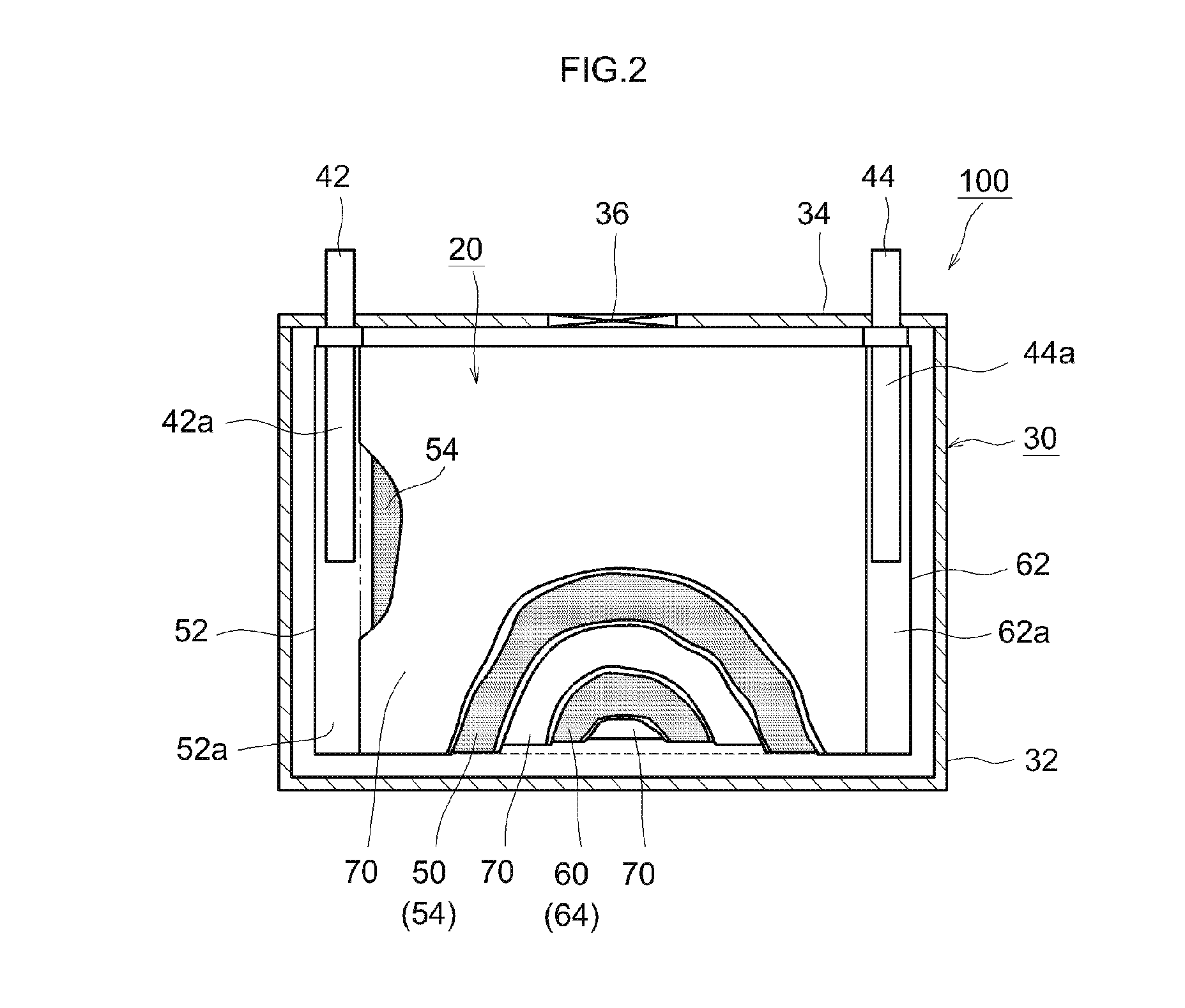Method for sorting reusable nonaqueous electrolyte secondary battery
- Summary
- Abstract
- Description
- Claims
- Application Information
AI Technical Summary
Benefits of technology
Problems solved by technology
Method used
Image
Examples
Embodiment Construction
[0023]FIG. 1 is a flowchart illustrating the flow of the method for sorting a reusable nonaqueous electrolyte secondary battery in accordance with the present teaching. The method for sorting a reusable nonaqueous electrolyte secondary battery disclosed herein includes: a preparation step (step S101) of preparing a spent nonaqueous electrolyte secondary battery having a positive electrode and a negative electrode; a step (step S102) of storing the prepared nonaqueous electrolyte secondary battery for a predetermined time under a high-temperature condition; and a determination step (step S103) of determining, on the basis of the internal resistance, whether or not the nonaqueous electrolyte secondary battery which has been stored at a high temperature can be reused. The nonaqueous electrolyte secondary batteries which have been determined in step S103 to be reusable may be reused by electrically connecting a plurality of the nonaqueous electrolyte secondary batteries to obtain a batt...
PUM
 Login to View More
Login to View More Abstract
Description
Claims
Application Information
 Login to View More
Login to View More - R&D
- Intellectual Property
- Life Sciences
- Materials
- Tech Scout
- Unparalleled Data Quality
- Higher Quality Content
- 60% Fewer Hallucinations
Browse by: Latest US Patents, China's latest patents, Technical Efficacy Thesaurus, Application Domain, Technology Topic, Popular Technical Reports.
© 2025 PatSnap. All rights reserved.Legal|Privacy policy|Modern Slavery Act Transparency Statement|Sitemap|About US| Contact US: help@patsnap.com



